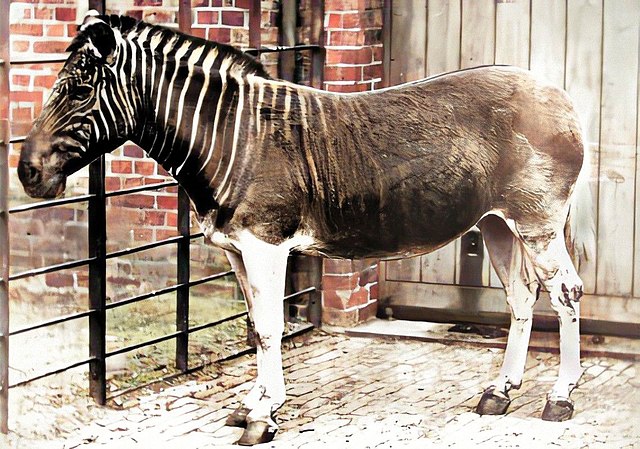The plains zebra is the most common and geographically widespread species of zebra. Its range is fragmented, but spans much of southern and eastern Africa south of the Sahara. Six or seven subspecies have been recognised, including the extinct quagga which was thought to be a separate species. More recent research supports variations in zebra populations being clines rather than subspecies.
Plains zebra
The skeleton exhibit in the Kunming Natural History Museum of Zoology, Kunming, Yunnan, China
Close-up of striping pattern of zebra in Tanzania
Zebras migrating with wildebeest in the Maasai Mara
Zebras are African equines with distinctive black-and-white striped coats. There are three living species: Grévy's zebra, the plains zebra, and the mountain zebra. Zebras share the genus Equus with horses and asses, the three groups being the only living members of the family Equidae. Zebra stripes come in different patterns, unique to each individual. Several theories have been proposed for the function of these patterns, with most evidence supporting them as a deterrent for biting flies. Zebras inhabit eastern and southern Africa and can be found in a variety of habitats such as savannahs, grasslands, woodlands, shrublands, and mountainous areas.
Zebra
Quagga mare at London Zoo, 1870, the only specimen photographed alive. This animal was historically considered a separate species but is now considered a subspecies or population of plains zebra.
Fossil skull of Equus mauritanicus
Skeleton of a Grévy's zebra at the State Museum of Natural History Karlsruhe








